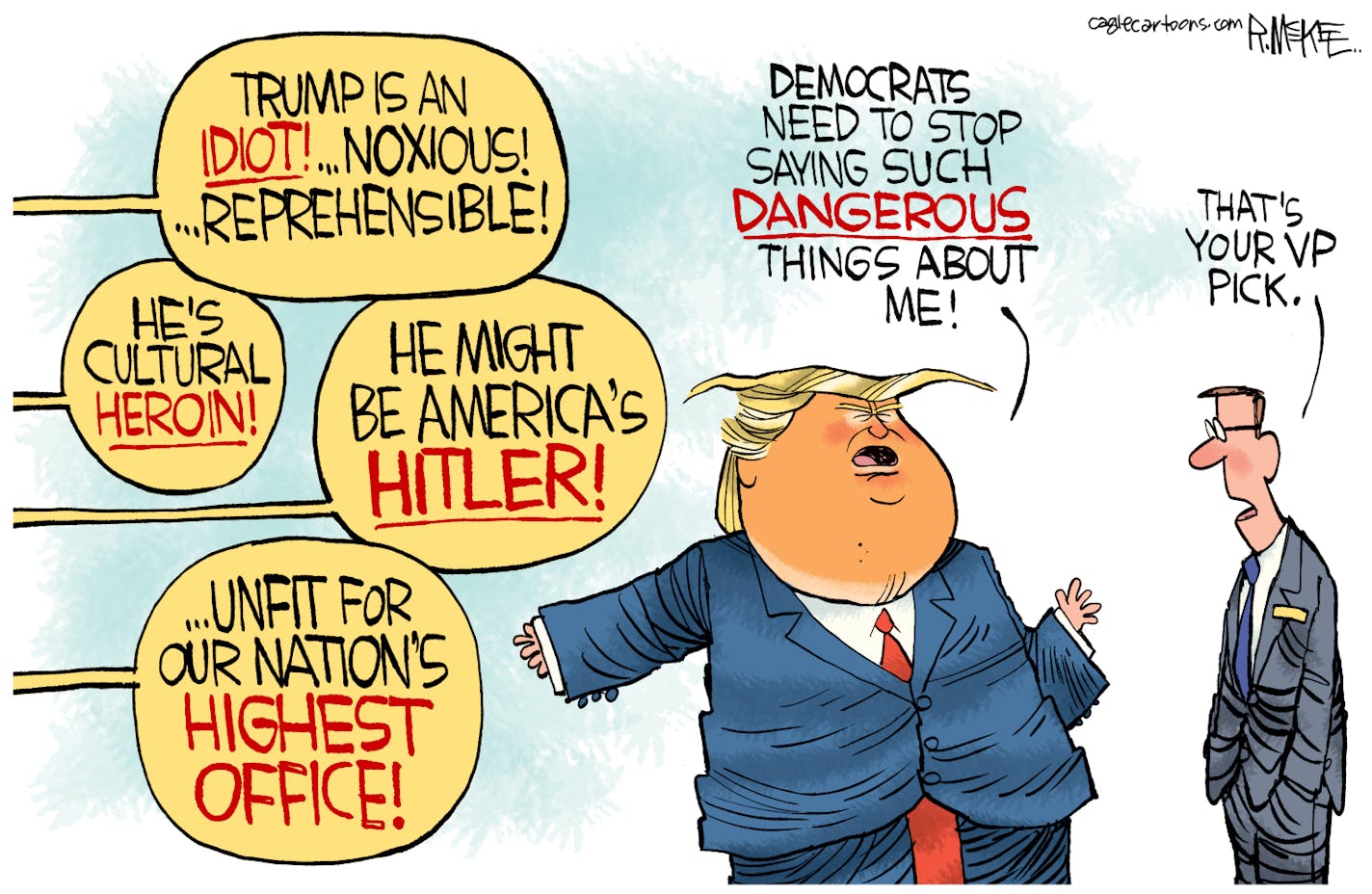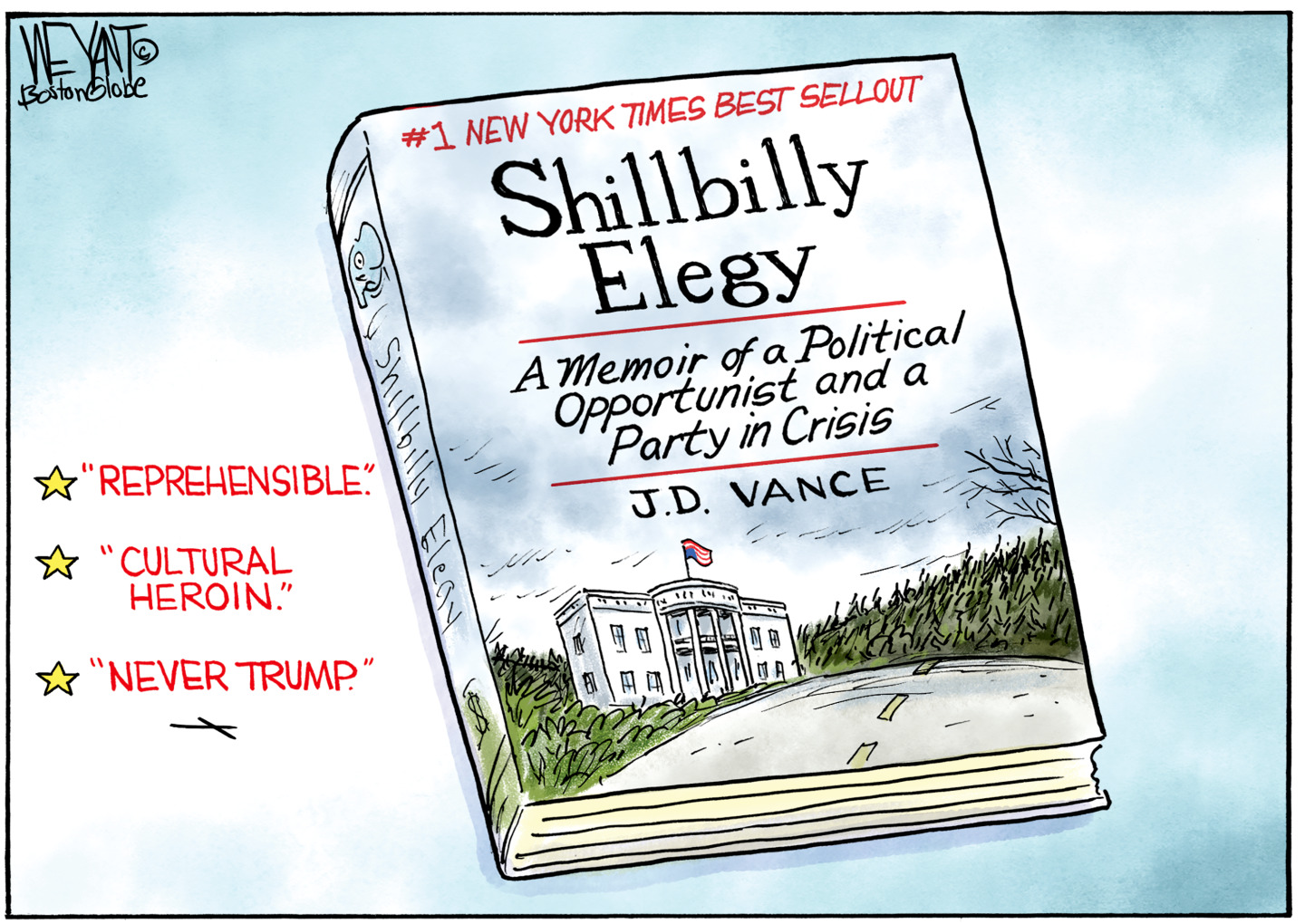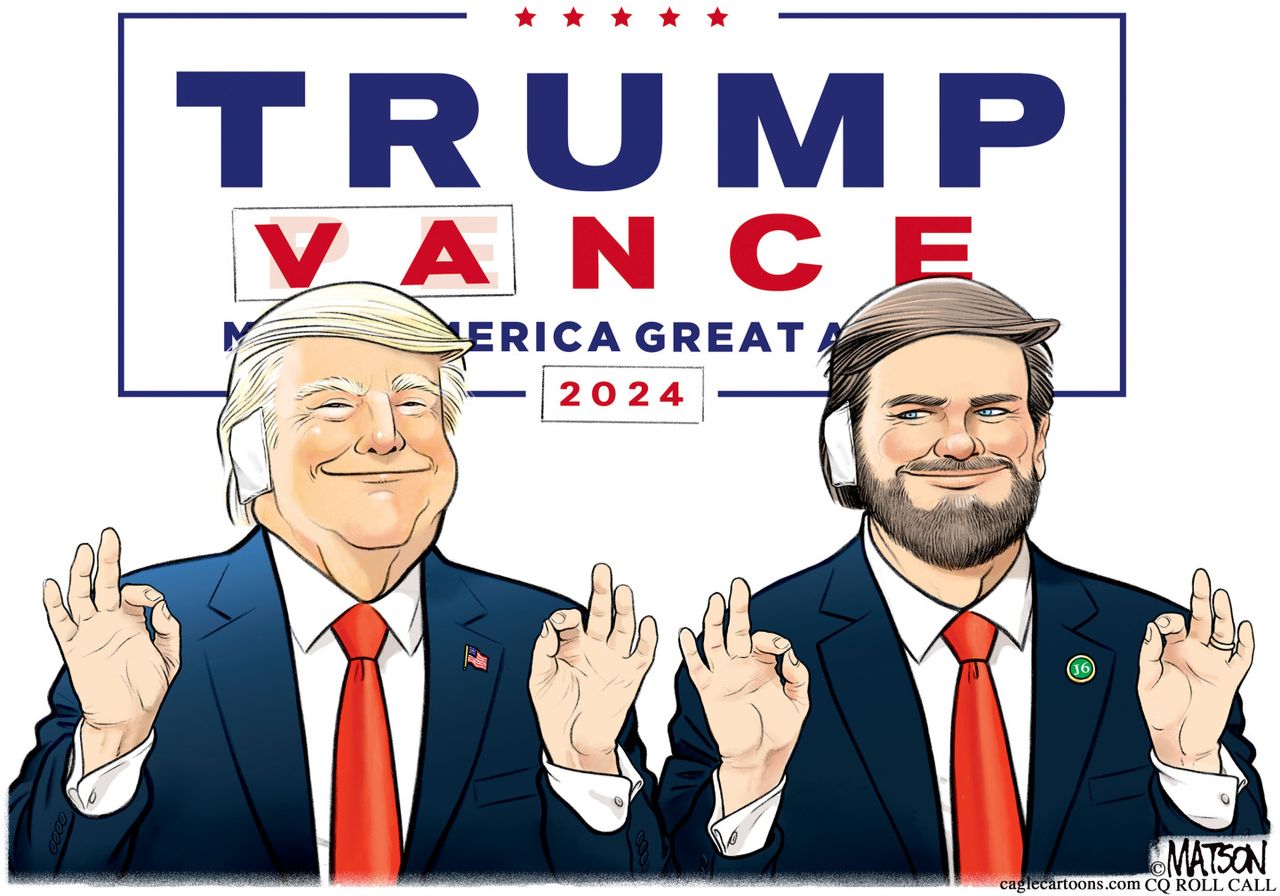Political cartoons have this amazing way of capturing a moment, a person, or even a big idea, don't they? They often simplify complex things into a single image, and when it comes to public figures like JD Vance, these visual interpretations can really get people talking. It's almost like a shorthand for public opinion, very much a part of how we understand our leaders and the issues they represent.
These drawings, sometimes funny, sometimes sharp, offer a unique perspective on the news. They can highlight traits, amplify perceived flaws, or simply make us think differently about someone. For a figure who has been in the public eye, like JD Vance, these artistic portrayals become part of his public story, you know?
So, we're going to take a closer look at the world of the jd vance cartoon. We'll explore why these visual bits of commentary hold so much weight, what kinds of messages they often convey, and how they might affect the way people see a person in the public square. It’s pretty interesting, really, to see how art and politics mix.
Table of Contents
- JD Vance: A Brief Look at the Public Figure
- The Art of the Political Cartoon
- Common Themes in JD Vance Cartoons
- The Impact and Reception
- Beyond the Image: What Cartoons Tell Us
- Frequently Asked Questions About Political Cartoons
- Conclusion: The Lasting Impression of Visual Commentary
JD Vance: A Brief Look at the Public Figure
When we talk about JD Vance, we're discussing a public figure who has gained considerable attention, especially in the political arena. He's known for his writings and his later shift into politics, representing a certain segment of the population's concerns. It's a journey that has seen him go from author to a prominent voice in national discussions, something that makes him a frequent subject for commentary, including those expressive drawings.
You know, it’s not every day someone from a background like his steps onto such a large stage. His story, his views, and his political actions all contribute to how he is seen by different groups. This public presence, naturally, makes him a target for artists who use their craft to comment on current events, so that’s why we see so many visual interpretations of him.
Here’s a quick look at some general details about his public profile, just to give a little context for why he might be a subject of these kinds of artistic expressions:
| Detail | Description |
|---|---|
| Public Role | Author, political commentator, elected official |
| Key Themes | Economic struggle, social issues, cultural shifts |
| Public Image | Often seen as a voice for a specific demographic, subject of much discussion |
| Media Portrayal | Varied, ranging from serious analysis to satirical depictions |
The Art of the Political Cartoon
Political cartoons are a really old form of communication, you know? They’ve been around for centuries, serving as a quick, powerful way to get a message across. They often simplify things, using symbols and exaggerated features to make a point. It’s a bit like a visual editorial, offering commentary without needing a lot of words, which is quite effective.
These drawings are, in a way, a mirror of the times. They reflect the feelings, the debates, and sometimes the frustrations of a society. An artist can convey so much with just a few lines, making these pieces incredibly impactful. It's a unique blend of art and journalism, really, and they often stick with people longer than a news report might.
A Brief History of Visual Satire
Think about it: people have always used pictures to poke fun at those in power, or to highlight what they see as unfair. From ancient cave drawings to the broadsides of the 18th century, visual satire has been a constant. It’s a way for ordinary people to express their views, or for artists to challenge authority, sometimes in a humorous way, sometimes with a very serious message, so that’s a long tradition we’re talking about.
In the past, these cartoons were printed in newspapers and magazines, reaching a wide audience. Now, with the internet, they spread instantly across social media, reaching even more people faster than ever before. This rapid sharing means a single drawing can spark a huge conversation, which is pretty powerful, actually.
Why JD Vance? The Subject's Appeal
So, why do certain public figures, like JD Vance, become such popular subjects for these kinds of drawings? Well, it usually comes down to a few things. They might have a distinctive look, a memorable quote, or they might represent a particular idea or movement that artists want to comment on. It’s almost like they become a symbol for something larger, you know?
For JD Vance, his journey from a specific background to national politics, and his strong opinions on various issues, make him a compelling subject. Artists often look for people who embody a certain narrative or who are at the center of a big debate. He fits that description quite well, offering plenty of material for creative interpretation, which is probably why we see so many different takes on him.
Common Themes in JD Vance Cartoons
When you look at a collection of jd vance cartoon images, you start to notice certain patterns, certain ideas that come up again and again. Artists tend to focus on specific aspects of his public persona or his political positions. These recurring themes help shape the overall impression people get, and it’s rather fascinating how consistent some of these visual messages can be.
It’s like artists have a shared understanding of what makes him recognizable, or what people associate with him. They pick up on public discussions and translate them into visual shorthand. This makes the cartoons easily understandable, even if you just glance at them quickly, which is a key part of their effectiveness.
Visual Cues and Symbolism
Artists often use specific visual cues to represent JD Vance. This could be anything from a particular hairstyle, a type of clothing, or even a facial expression that becomes synonymous with him. These aren't just random choices; they're often exaggerations of real features or elements that the public has come to associate with him, so that’s a deliberate artistic choice.
Beyond physical appearance, there's a lot of symbolism at play. A cartoon might show him standing next to certain objects or wearing specific symbols that represent his political party, his views, or even a perceived change in his stance. These symbols add layers of meaning, allowing the artist to convey complex ideas without needing a lot of text, which is pretty clever.
Capturing Public Perception
One of the main goals of a political cartoon is to capture and often influence public perception. An artist might draw JD Vance in a way that highlights a perceived contradiction, or perhaps to comment on his alignment with certain political figures or ideas. These drawings reflect what many people might already be thinking, or they might introduce a new way of looking at him, you know?
The visual commentary can simplify complex political arguments into a single, memorable image. This simplicity means the message can spread quickly and stick in people's minds. It’s a powerful tool for shaping how a public figure is viewed, sometimes even more so than a long article, because images are so immediate.
The Impact and Reception
The impact of a jd vance cartoon, or any political cartoon for that matter, can be quite significant. These images don't just exist in a vacuum; they become part of the broader conversation around a public figure. They can provoke strong reactions, spark debates, and even change how some people think about the subject, which is a big deal, really.
The way these cartoons are received varies a lot, depending on who is looking at them. Supporters of the figure might see them as unfair or biased, while critics might find them insightful or amusing. This range of reactions shows just how much power a simple drawing can hold, and how it connects with different viewpoints.
Shaping Opinion, For Better or Worse
A well-crafted cartoon has the ability to shape public opinion. By exaggerating certain traits or situations, artists can make a point that resonates deeply with viewers. For JD Vance, these cartoons might reinforce existing beliefs about him, or they might introduce new ideas, perhaps even negative ones, that weren't there before. It’s a subtle but powerful form of influence, you see.
Sometimes, a cartoon can even become iconic, defining a moment or a person in the public imagination for a long time. It’s a testament to the power of visual communication, how a single image can distill complex political narratives into something instantly recognizable and memorable, which is pretty amazing when you think about it.
The Online Conversation Around Caricatures
In today's connected world, a jd vance cartoon can spread across social media platforms in moments. This rapid sharing leads to a lot of online conversation. People share the cartoons, add their own comments, and debate the meaning or fairness of the depiction. It’s a very active discussion, and it shows how much these visual pieces engage the public, you know?
This online buzz means that the impact of a cartoon is no longer limited to just those who see it in a newspaper. It becomes a viral phenomenon, reaching millions and contributing to a larger, ongoing dialogue about the public figure. It’s a powerful way for ideas to spread and for people to connect over shared views, or to argue about differing ones.
Beyond the Image: What Cartoons Tell Us
Looking at a jd vance cartoon isn't just about seeing a funny picture; it's about understanding a deeper commentary. These drawings often tell us something about the political climate, the prevailing public mood, and even the cultural values of a society. They're a form of social critique, offering insights that might be harder to grasp from traditional news reports, so they’re quite valuable in that sense.
They can highlight hypocrisy, celebrate a perceived victory, or mourn a perceived loss. They are, in a way, a barometer of public sentiment, showing us what people are talking about and how they feel about it. It’s a very direct form of expression, and it tends to be quite honest in its portrayal of public sentiment.
A Mirror to Society
In many ways, political cartoons act as a mirror, reflecting society's attitudes and concerns. A jd vance cartoon, for instance, might show us prevailing opinions about his policies, his political allies, or even his personal journey. They reflect the common narratives and sometimes even the stereotypes that exist in public discourse, which is a bit sobering at times.
They can also reveal underlying tensions or divisions within a society. When different groups react very differently to the same cartoon, it highlights the various perspectives at play. It's a powerful way to see the pulse of a nation, captured in a single, often striking, image, and that’s pretty insightful.
The Role of Humor in Politics
Humor, even biting satire, plays a really important role in political cartoons. It can make difficult or uncomfortable topics more approachable, allowing people to engage with them in a less confrontational way. A funny jd vance cartoon might make you laugh, but it also makes you think, and that’s a powerful combination, you know?
Laughter can be a way to cope with serious issues, or to disarm powerful figures. It allows for critique without necessarily resorting to harsh language. This use of humor helps these cartoons resonate widely and encourages people to share them, making them a very effective tool for political commentary, and that’s quite clever, really.
Frequently Asked Questions About Political Cartoons
Here are some common questions people often have about political cartoons, especially when they focus on public figures like JD Vance:
Why are political figures like JD Vance often depicted in cartoons?
Public figures, especially those in politics, are often drawn in cartoons because they represent ideas, policies, or movements that artists want to comment on. Their actions and words have a big impact, making them natural subjects for visual commentary. It’s a way to quickly communicate complex political situations through a recognizable face, so that’s a key reason.
What is the purpose of a political cartoon?
The main purpose of a political cartoon is to offer commentary, often satirical, on current events, public figures, or societal issues. They aim to inform, persuade, or provoke thought, sometimes using humor or exaggeration to make a strong point. They're basically a visual opinion piece, you know, meant to make you think.
How do cartoons influence public perception?
Cartoons can influence public perception by simplifying complex ideas, highlighting certain traits, or associating figures with specific symbols or narratives. Their visual nature makes them memorable and easily shareable, helping to shape opinions and discussions around a public figure. They often create a lasting impression, which is quite powerful, actually.
Conclusion: The Lasting Impression of Visual Commentary
The ongoing creation of a jd vance cartoon, like any political caricature, speaks volumes about the role of visual satire in our public life. These drawings are more than just pictures; they're a vital part of how we process information, express opinions, and engage with the political world around us. They can be sharp, funny, or deeply thought-provoking, and they always add a unique layer to the public conversation, which is pretty cool.
As we continue to explore the ways public figures are portrayed, it's clear that the impact of these visual interpretations will only grow, especially with the speed of online sharing. They hold a mirror up to society, reflecting our views and sparking important discussions. Just as you might explore agricultural machinery on the official John Deere website or find parts for your equipment, we're exploring the mechanics of public perception through art.
Consider how these visual pieces shape your own understanding of the world, or how they might affect others. To learn more about political commentary on our site, you can explore our extensive collection of articles. And if you're interested in how media shapes public figures, you might also find value in visiting this page exploring media portrayals. It’s a fascinating area, and these cartoons are just one piece of a much larger puzzle, so it’s worth thinking about.
For further reading on the broader topic of political satire and its historical context, you might find useful information on reputable news or academic sites that discuss media and politics, such as those found through a general search for "history of political cartoons" on a major news outlet's archive.



Author Details:
- Name : Miss Beryl Wiza IV
- Username : cruickshank.carole
- Email : tia17@friesen.com
- Birthdate : 1984-04-21
- Address : 9418 Ines Place Suite 714 North Allan, UT 89551
- Phone : 1-662-421-9738
- Company : Prohaska Group
- Job : Health Services Manager
- Bio : Repudiandae corrupti rerum harum porro eveniet voluptatem. Doloremque laboriosam harum consequatur quia similique. Qui sed aut voluptates aliquam et ipsum quo earum.
Social Networks
Instagram:
- Url : https://instagram.com/hackettr
- Username : hackettr
- Bio : Temporibus qui et omnis aut. Blanditiis qui a et. Doloribus non architecto et eaque harum.
- Followers : 2346
- Following : 2721
Facebook:
- Url : https://facebook.com/hackett1973
- Username : hackett1973
- Bio : Unde molestiae qui corporis placeat culpa possimus aspernatur.
- Followers : 5154
- Following : 583
Tiktok:
- Url : https://tiktok.com/@ryley_id
- Username : ryley_id
- Bio : Voluptatem totam iure ea recusandae adipisci quod.
- Followers : 1574
- Following : 1651
Twitter:
- Url : https://twitter.com/ryley_hackett
- Username : ryley_hackett
- Bio : Sunt expedita cumque neque laborum hic possimus voluptatibus. Consequatur voluptas et illo consectetur. Laudantium quis deleniti facere. Vel nemo unde aut.
- Followers : 5599
- Following : 1707
